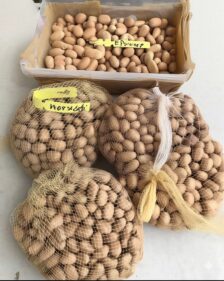- Your cart is empty
- Continue shopping
Shop Quality Encephalartos princeps seeds and grow this rare, blue-leaved South African cycad. Perfect for collectors seeking exotic and resilient plants.


Conservation Considerations for encephalartos princeps seeds
Given its vulnerable status, cultivating Encephalartos princeps contributes to conservation efforts by reducing the demand for wild-collected plants. Participating in seed exchange programs and supporting conservation initiatives can further aid in preserving this remarkable species.

Conclusion
Growing Encephalartos princeps from seeds requires dedication, attention to detail, and a willingness to invest time in nurturing these ancient plants. By following the guidelines outlined above, enthusiasts can successfully cultivate this species, contributing to its preservation and enjoying the unique beauty it adds to any collection or landscape.Shop here
| Quantity | 100, 200, 500, 1000 |
|---|